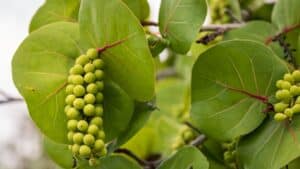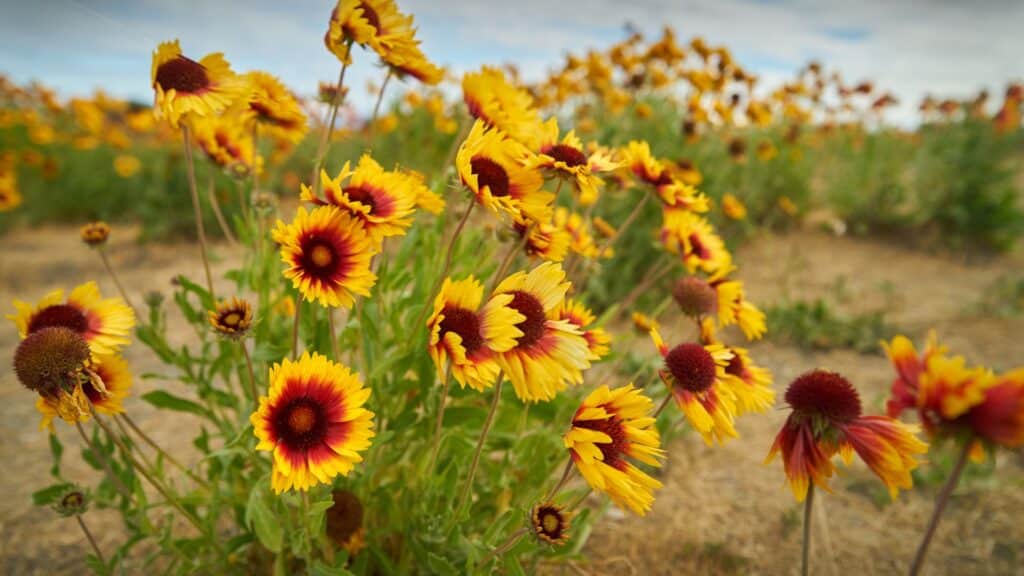
Salt Tolerant Plants for Coastal Landscapes
Living near the coast presents unique gardening challenges. Salt, from sea spray or even inland sources, can damage plants. This guide will help you identify salt tolerant plants suitable for your coastal landscape. Most soils in Duval County test at less than 2 dS/m, a measure of salinity which is in the range of healthy plant growth. But local variation can occur, especially near the coast and in poorly draining sites, with soil salinity over 16 dS/m in some areas!
Understanding Salt’s Impact
Excess salt in soil or water hinders water uptake by plants, leading to wilting and stunted growth. Salt toxicity can cause leaf burn (chlorosis), browning, and even death. Diagnosing salt stress can be tricky because similar symptoms arise from other problems. Damage from saline soils are evident more slowly than from salt spray, and salt in the soil causes burn on leaf margins whereas salt landing on foliage creates burns throughout the leaf. But these symptoms can resemble symptoms from many other factors including disease, drought and chemical misuse.
Testing for Salinity
Testing your soil and irrigation water will reveal issues with salinity and help you diagnose and correct plant problems. These tests can be run by the UF/IFAS Analytical Services Laboratory. Contact them at (352) 392-1950 Ext. 221, email soilslab@ifas.ufl.edu, or use their website soilslab.ifas.ufl.edu. Form SL133 is used for irrigation and well water, and includes testing for sodium (Na) and chloride (Cl) levels (the two salts which cause the most plant damage) and electrical conductivity (total salinity level). Use Form SL135 for an analysis of soil salinity.
Interpreting Test Results
To put into perspective the results of your tests, here are some common values:
- Rainwater: Less than 20 ppm
- Fresh water: Less than 1000 ppm
- Ocean water: 35,000 ppm
- Low soil salinity: 1-1000 ppm
- Moderate soil salinity: 1000-2000 ppm
- Most plants struggle above 2000 ppm (3 dS/m) with high sodium (>70 ppm in water, >230 ppm in soil) or chloride (>350 ppm in water, >250 ppm in soil).
- Beach conditions: Soil salinity 8-10 dS/m (5600-7000 ppm) or higher, spray with 600 ppm sodium and 900 ppm chloride.
Managing Salinity in Your Landscape
If your tests reveal excessive salinity, there are several ways to alleviate it.
- Improve drainage through aeration and amendments.
- Leach salts from the root zone with flushing.
- Use mulch to suppress evaporation and salt buildup.
- Test before fertilizing.
- Favor drip or ground irrigation over sprinklers to minimize salt exposure.
- Rinse plants with fresh water after salt spray events.
Choosing Salt-Tolerant Plants
While test results are helpful, plant responses to salt can vary. Traditionally, salt tolerance is described by a plant’s ability to withstand conditions at different distances from the ocean:
- Zone 1 (Highly Tolerant): Thrives in exposed beach locations with direct salt spray.
- Zone 2 (Moderately Tolerant): Tolerates some salt spray but prefers protection from structures or dunes.
- Zone 3 (Slightly Tolerant): Needs protection from exposed areas.
North Florida’s Salt-Tolerant Plant List
This list combines information from various sources and categorizes plants by tolerance (High/Mod). Rockaway’s landscape architects and designers take plant salt tolerance into account for landscape design and installation clients especially along our Northeast Florida coastal properties.
From our office in Atlantic Beach and satellites throughout Northeast Florida, Rockaway Inc proudly serves both commercial and residential landscape design, maintenance, lawn care, irrigation, and outdoor living carpentry client needs in Jacksonville, St Augustine, Atlantic Beach, Neptune Beach, Jacksonville Beach, Ponte Vedra, Nocatee, St. Johns, and Fernandina Beach.
Click Here to view or download this guide as a PDF (from our former Garden Center Operation).
